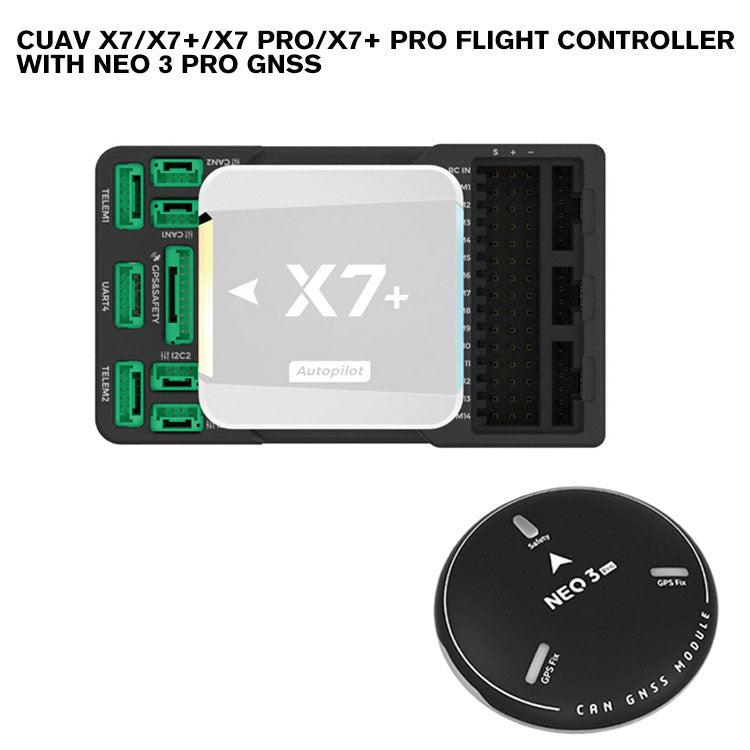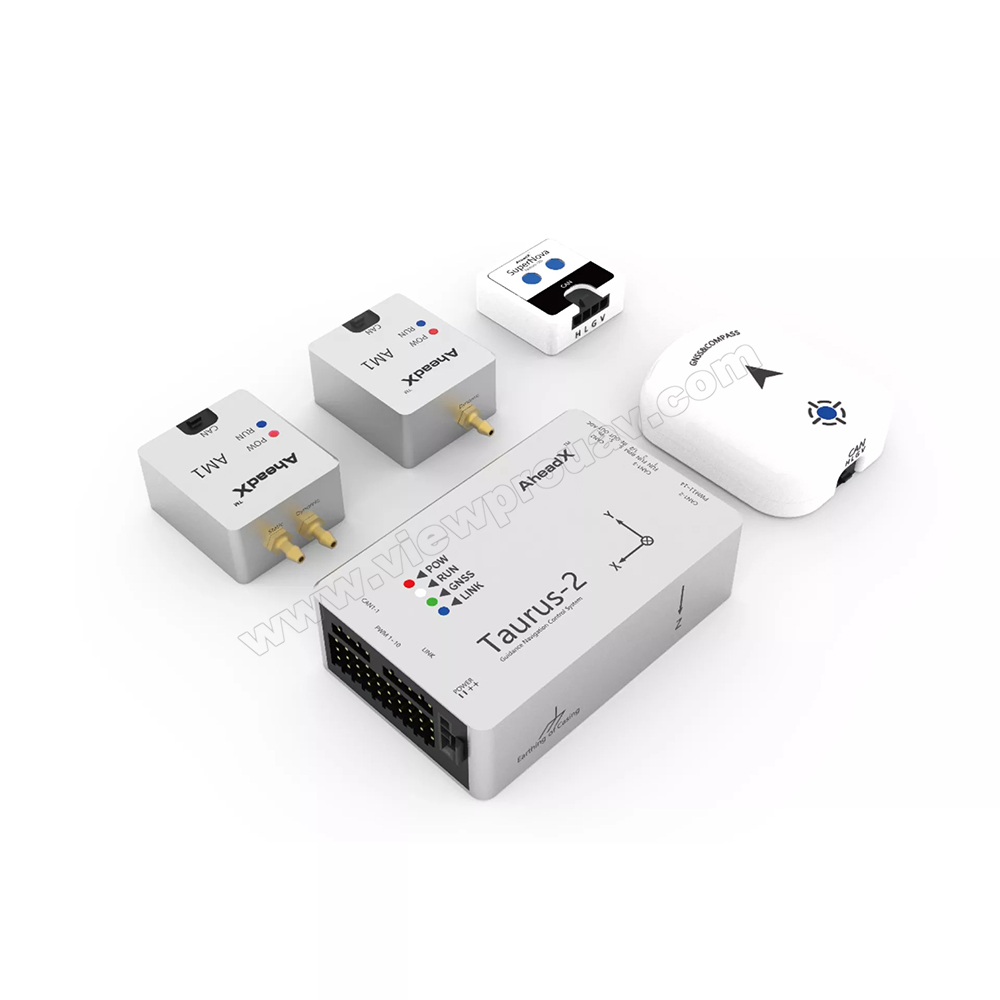SparkNavi Drone Flight Controller and GNSS/INS Made in Taiwan: Blazing A Trail in Drone Innovation
SparkNavi Drone Flight Controller and GNSS/INS Made in Taiwan: Blazing A Trail in Drone Innovation
Blog Article
Checking Out the Duty of Drone Flight Controllers in Enhancing Trip Stability and Navigating Efficiency
The improvement of drone modern technology has significantly boosted the importance of trip controllers, which work as the brain of these aerial vehicles. By integrating real-time data from a selection of sensing units, flight controllers improve trip stability and navigation performance, making sure that drones can operate smoothly also in complicated atmospheres. This discussion will certainly discover the key parts that add to these improvements, in addition to the effects for the future of self-governing trip. What technologies lie in advance that could better transform the capabilities of drone flight controllers?

Recognizing Flight Controllers
Trip controllers are indispensable components in the performance of drones, acting as the brains that support and take care of flight procedures. These innovative gadgets process information from different sensors, including accelerometers, gyroscopes, and GPS, to ensure that the drone keeps its intended trip course. The trip controller analyzes this data and carries out commands based upon pre-defined algorithms, enabling the drone to respond to ecological adjustments, such as wind or obstacles.
The primary feature of a flight controller is to preserve security during flight. It achieves this by making real-time modifications to the drone's electric motors and control surfaces, making certain balance and control. Additionally, modern-day flight controllers include sophisticated features such as waypoint navigating, enabling automated trip paths and enhanced functional effectiveness.
Comprehending the architecture of flight controllers is vital for both hobbyists and professionals. They normally include a microcontroller, firmware, and numerous user interfaces for sensor input and communication. As innovation breakthroughs, flight controllers have actually come to be much more qualified and portable, integrating artificial intelligence to adapt and improve decision-making procedures to complicated trip situations. This evolution indicates a crucial development in the drone market, leading the way for a lot more advanced applications and much safer procedures.
Key Components of Trip Security
Attaining optimum trip security in drones counts on a number of vital components that operate in concert to ensure controlled and smooth operations. Central to this security is the trip controller itself, which processes information from various sensors to maintain the wanted flight perspective. This consists of accelerometers and gyroscopes that determine motion and orientation, enabling for real-time modifications to the drone's placement.
One more crucial element is the digital rate controllers (ESCs), which control the power provided to the motors. By finely tuning motor rates in action to trip controller commands, ESCs help preserve balance and counteract disturbances triggered by wind or unexpected activities.
In addition, the style of the drone's structure plays a critical duty in flight stability. A well-structured frame minimizes vibrations and improves the total aerodynamic account, adding to smoother trip characteristics. Ultimately, the assimilation of innovative formulas within the flight controller help in predictive changes, ensuring a responsive and adaptable trip experience.
Together, these components create a cohesive system that enhances a drone's stability, permitting precise handling and enhanced efficiency in numerous trip conditions.
Navigating Efficiency Strategies
Performance in navigation is necessary for optimizing drone operations, especially in intricate environments. Efficient navigation methods improve the ability of drones to go across tough terrains and prevent barriers, therefore enhancing operational effectiveness and safety and security.
One prominent technique is the application of sophisticated GPS and inertial dimension devices (IMUs) that offer specific area tracking and positioning data. These technologies permit drones to determine ideal flight courses in real-time, taking right into account numerous variables such as wind problems and potential challenges.
One more strategy includes the use of algorithms for course preparation and optimization. Formulas such as A * and Dijkstra's formula can be deployed to determine the most reliable route while minimizing power consumption and flight time. Additionally, incorporating artificial intelligence versions can allow drones try this to adaptively learn from their environments, enhancing navigating abilities via experience.

Effect On Autonomous Drones
The combination of sophisticated navigation techniques has actually profoundly changed the abilities of self-governing drones, allowing them to run with higher freedom and precision. SparkNavi drone flight controller and GNSS/INS made weblink in taiwan. These improvements are primarily credited to innovative trip controllers that make use of real-time information handling and sensing unit blend, enabling drones to navigate complicated settings seamlessly
The impact on self-governing drones prolongs past mere navigation; it incorporates boosted challenge evasion, boosted stability throughout dynamic conditions, and enhanced goal reliability. By leveraging algorithms that integrate artificial intelligence and synthetic knowledge, drones can adapt to transforming conditions, making educated choices that optimize their flight courses while lessening dangers.
Moreover, the implementation of robust trip controllers has actually helped with the implementation of complicated tasks, such as airborne evaluations, delivery services, and agricultural monitoring, with marginal human treatment. This capacity not just improves operations yet additionally lowers human mistake, therefore enhancing total security.
Therefore, the functional extent of autonomous drones has actually increased substantially, making them essential tools in various industries. Their ability to carry out effectively in diverse situations emphasizes the essential role that progressed flight controllers play fit the future of unmanned aerial systems.
Future Patterns in Trip Control
Regularly, innovations in flight control technology are positioned to redefine the landscape of drone procedures in the coming years. Emerging patterns suggest a significant shift in the direction of enhanced expert system (AI) combination, making it possible for flight controllers to process real-time data more effectively. This advancement will facilitate improved decision-making capabilities, enabling drones to adapt to dynamic ecological problems autonomously.
Additionally, the execution of artificial intelligence algorithms is anticipated to improve anticipating upkeep, therefore reducing downtime and expanding the lifecycle of drone components. This positive approach to maintenance will certainly be crucial as drone applications broaden site here throughout various industries, from agriculture to logistics.

.png)
Finally, advancements in safe and secure communication procedures will resolve security and regulatory problems, making certain that drones can operate perfectly in stuffed airspaces (SparkNavi drone flight controller and GNSS/INS made in taiwan). Jointly, these patterns aim in the direction of a future where flight control systems are not just smarter and a lot more effective but likewise capable of running safely in a progressively incorporated airspace
Verdict
In verdict, drone flight controllers are essential to enhancing flight security and navigation effectiveness through the sophisticated handling of sensing unit data. By maintaining optimal trip perspectives and employing advanced algorithms for path optimization and challenge avoidance, these controllers significantly add to the autonomy and operational safety and security of drones. As technology proceeds to progress, better improvements in flight control systems are expected, promising better efficiency and increased abilities in the world of unmanned airborne lorries.
By integrating real-time information from a selection of sensing units, trip controllers boost trip security and navigating performance, guaranteeing that drones can run smoothly also in intricate environments.Flight controllers are essential elements in the functioning of drones, serving as the minds that stabilize and manage trip procedures. In addition, modern flight controllers include sophisticated functions such as waypoint navigating, allowing for automated flight courses and boosted operational effectiveness.
Central to this security is the trip controller itself, which refines information from different sensing units to keep the wanted trip attitude.In verdict, drone flight controllers are integral to improving flight security and navigation efficiency with the innovative processing of sensing unit data.
Report this page